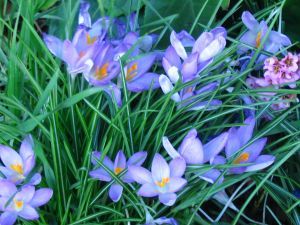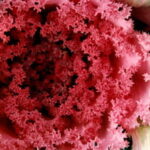Large trees, such as oaks, maples, beeches and ornamental crabs are valuable additions to the landscape, but they present challenges to the gardener. Large trees have long lives,. It would be a shame to cut down a majestic tree to make room for a garden.
Trees create shade, with lovely protection from the sun and respite from the heat of the day. Shade protects the house from heat and saves on air conditioning costs.
This same protective shade is challenging to the gardener, because most flowers need sunlight to grow. This doesn’t mean that the gardener can’t have a lovely flower garden, they just need to plan the garden and search for plants that tolerate shade well.
Plan a garden under a majestic tree, for a magical look, like a fairyland surrounding the tree.
It may be possible to trim some lower branches of the tree to allow some additional light in for the plants. Be careful not to interfere with the tree roots. Since the plant roots will be competing with the tree roots for nourishment, it is important to feed the plants under the tree so they all have enough of the nutrients needed to thrive. Select plants with shallow roots, so they won’t interfere with the tree’s roots. The grade under the tree should not be raised more than four inches, if at all.
Plants that thrive in shade are different in appearance from flowers that need sun, in that they usually don’t feature large showy blooms. Blooms tend to be smaller and more airy and ethereal in appearance. Focus upon different types of foliage and the variations in texture and color in the leaves.
Select shallow rooted, shade tolerant, drought tolerant tough plants for a successful garden under the tree. Following are some suggested plants for a garden under the tree.
Spring bulbs: Bulbs such as tulips, daffodils, crocuses, grape hyacinth, and snow drops appear after the snow and before the leaves on the tree arrive. Spring bulbs can live in harmony with the tree roots and provide lively spring color.
Bushwallia – Bush Violets
Bugleweeds: Rosettes of spoon shaped leaves with spikes of purple-blue flowers.
Celandine Poppy.
Colombine: Fanciful bonnet shaped blooms that raise up above the foliage. Colombine comes in a variety of colors.
Coral Bells: Tiny tufts of color rise up above a cluster of leaves. Coral Bells come in a variety of colors, both in foliage and in the tiny blooms.
Epimediums / Barrenworts: Tough shade-tolerant plants that bloom in early spring, have handsome foliage. nm
Greater Celandine
Green-and-gold / Golden Stars: Native wildflower, 8 inches tall.
Hardy Geraniums / Cranebills: English Geraniums have dainty blooms in shades of pink, purple and magenta.
Hellebores: Large showy flowers are early and long bloomers.
Hosta: There are about 70 species of this easy-to-grow plant. Variations in leave colors create interest in the garden. Hostas have spikes of white flowers that rise above the plant.
Lily-of-the-Valley: Small fragrant stems with tiny white, bell shaped flowers bloom in spring. The shiny thick green leaves cover the ground all summer.
Lilyturfs: Small clumps of grasslike leaves spill into a fountain shapes, with small spikes of blooms.
Periwinkle / Myrtle
Solomon’s Seal: Arching clumps of leaves with plume like habits.
Spotted Deadnettles
Sweet Woodruff: Low growing plants with tiny clusters of white flowers.
Valerian: spur shaped flowers come in white and shades of pink.
Wild Gingers
Wild Aster
Resources:
Burpee: The Complete Flower Gardener, by Karan Davis Cutler and Barbara W. Ellis





